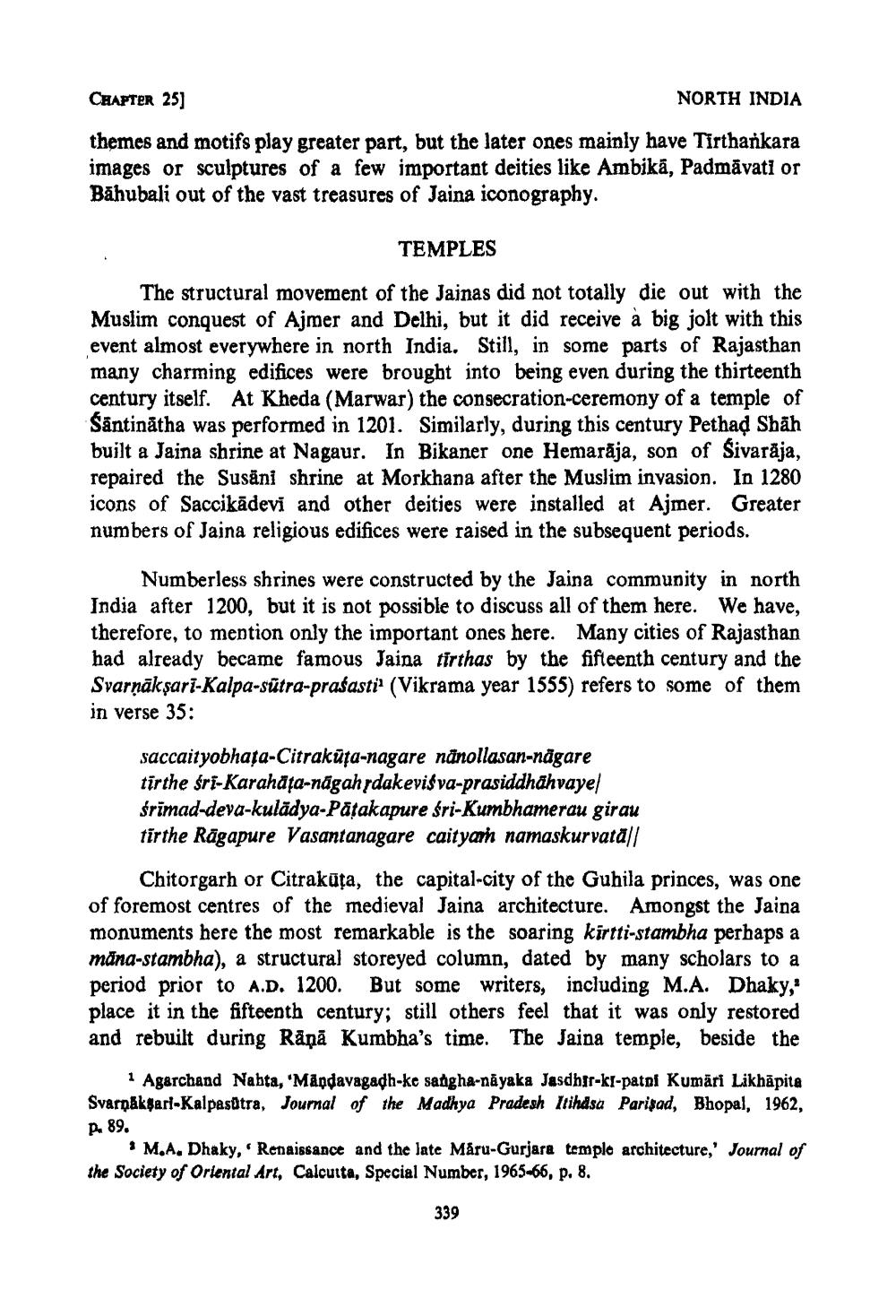________________
CHAPTER 25]
NORTH INDIA
themes and motifs play greater part, but the later ones mainly have Tirthankara images or sculptures of a few important deities like Ambikā, Padmăvati or Bahubali out of the vast treasures of Jaina iconography.
TEMPLES
The structural movement of the Jainas did not totally die out with the Muslim conquest of Ajmer and Delhi, but it did receive a big jolt with this event almost everywhere in north India. Still, in some parts of Rajasthan many charming edifices were brought into being even during the thirteenth century itself. At Kheda (Marwar) the consecration-ceremony of a temple of Sāntinátha was performed in 1201. Similarly, during this century Pethad Shāh built a Jaina shrine at Nagaur. In Bikaner one Hemarāja, son of Sivarăja, repaired the Susani shrine at Morkhana after the Muslim invasion. In 1280 icons of Saccikādevi and other deities were installed at Ajmer. Greater numbers of Jaina religious edifices were raised in the subsequent periods.
Numberless shrines were constructed by the Jaina community in north India after 1200, but it is not possible to discuss all of them here. We have, therefore, to mention only the important ones here. Many cities of Rajasthan had already became famous Jaina tirthas by the fifteenth century and the Svarṇākṣari-Kalpa-sūtra-prasasti' (Vikrama year 1555) refers to some of them in verse 35:
saccaityobhata-Citrakūța-nagare nänollasan-nägare tirthe tri-Karahāța-nāgah sdakevis va-prasiddhähvaye śrīmad-deva-kulädya-Pătakapure sri-Kumbhamerau girau tirthe Rāgapure Vasantanagare caityan namaskurvata
Chitorgarh or Citrakūta, the capital city of the Guhila princes, was one of foremost centres of the medieval Jaina architecture. Amongst the Jaina monuments here the most remarkable is the soaring kirtti-stambha perhaps a mäna-stambha), a structural storeyed column, dated by many scholars to a period prior to A.D. 1200. But some writers, including M.A. Dhaky, place it in the fifteenth century; still others feel that it was only restored and rebuilt during Ränā Kumbha's time. The Jaina temple, beside the
1 Agarchand Nabta, 'Māodavagadh-ke sangha-nāyaka Jasdhir-ki-patni Kumāri Likhāpita Svarpåksari-Kalpas tra, Journal of the Madhya Pradesh Itihdsa Parisad, Bhopal, 1962, Pa 89.
M.A. Dhaky, Renaissance and the late Måru-Gurjara temple architecture,' Journal of the Society of Oriental Art, Calcutta, Special Number, 1965-66, p. 8.
339




